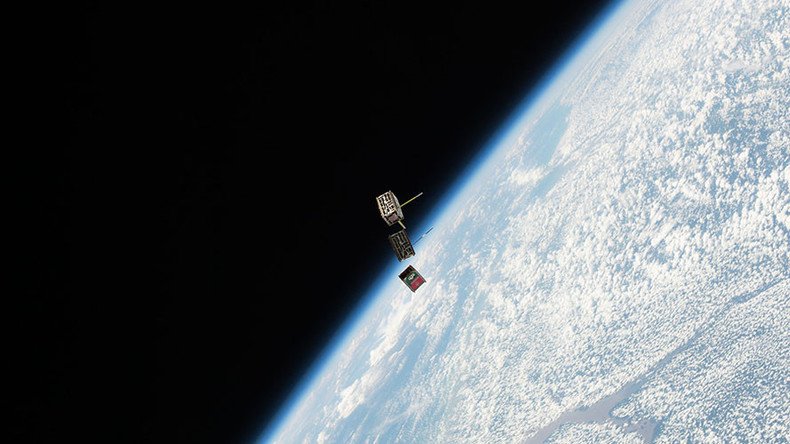Small spaceships for NASA may mean big leap for humanity

NASA’s new one-stop shop in California will allow research and development of new small spacecraft systems. Be it scientific instruments or exploration sensors, the tiny machines can help study the environment and contribute to space exploration.
The small spacecraft systems can vary in size from a postage-small, (under an ounce) or up to the size of refrigerator (about 400 pounds). The Small Spacecraft Systems Virtual Institute (S3VI), which is being established at the Ames Research Center in Moffett Field, California, will leverage the growing small spacecraft community, according to the US space agency.
“NASA sees enormous benefits from investing in research and technology development in small spacecraft systems, such as propulsion, that will be essential in advancing the commercial space sector,” Steve Jurczyk, associate administrator for NASA’s Space Technology Mission Directorate (STMD) said in a statement. “Over the past several years, NASA has increased the generation of new, innovative applications of small spacecraft, with several mission directorates using small spacecraft to meet their goals.”
NASA creates virtual institute at California for innovation of Small Spacecraft Systems (S3VI) - The TeCake https://t.co/dHZGMtlkEv#Nasa
— Ufo_area 👽 (@Ufo_area) October 24, 2016
The research and development hub will promote innovation, identify emerging technologies and bring together industry, academia, private companies and other government agencies under NASA’s umbrella.
A study by the Rand Corporation titled ‘The Cosmos on a Shoestring’ said that small spacecraft systems offered NASA a way to maintain scientifically viable programs within tighter budgets. Small spacecraft are cheaper because of the new miniature technologies, which enables the agency to spread out mission risk. Unlike large missions, which often take a long time, with the smaller craft the agency can remains responsive to earth- and space-science communities.
“Small spacecraft fulfill important roles in earth science, astrophysics, space physics, and planetary science,” stated NASA.
From studying the Earth to exploring space, we are using and enabling small satellite technology. See the missions: https://t.co/J1jGTtFZ0dpic.twitter.com/p1a6MmcgMO
— NASA (@NASA) October 21, 2016
The agency’s Space Technology Group began in 2011 and is currently using small spacecraft for a range of activities, such as “earth and space science measurements to help understand our environment; investigations of microgravity effects on organisms to enable the safe exploration of space; and robotic precursors to maximize the productive use of space.”
“The S3VI will provide the first one-stop shop for technical knowledge in the rapidly burgeoning small spacecraft technology fields,” said Jay Bookbinder, director of programs and projects at Ames. “This will result in more efficient development efforts, and enable smaller vendors to compete more effectively in this market.”
NASA robot may find 'clues to origin of life' on near-Earth asteroid [VIDEO] https://t.co/8L1hOF5P74pic.twitter.com/9aGstra4kQ
— RT America (@RT_America) September 7, 2016
The institute S3VI portal will go live in early 2017 and will capture data on spacecraft activities and lessons learned, and identify collaboration opportunities and points of contacts at NASA.












